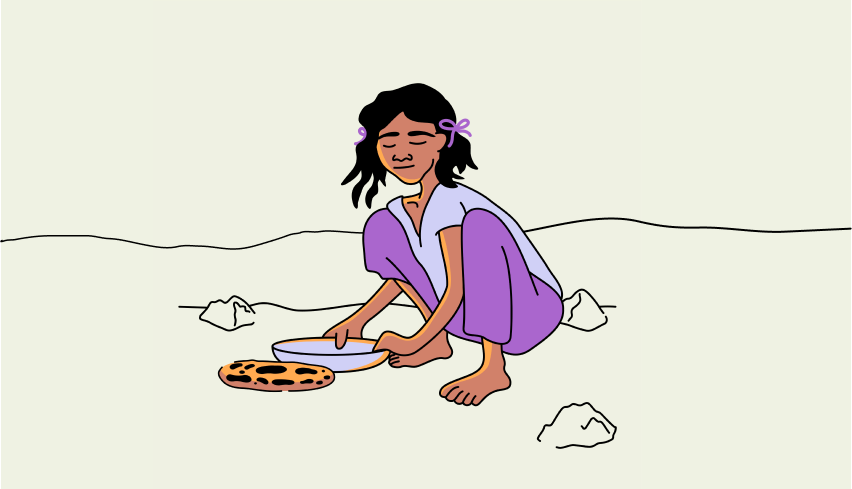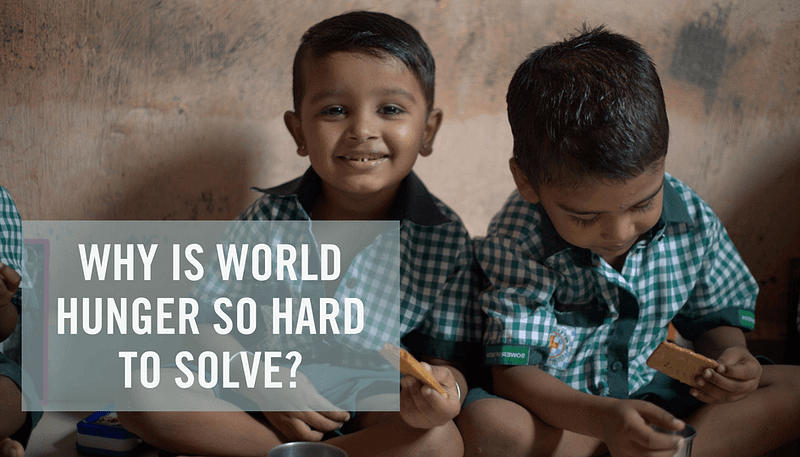Written By: Christie A.
If you’ve been watching the news, you may have heard about the twitter exchange between Elon Musk and the World Food Program. The newsworthy conversation between these two is ongoing, but it begs the question that Elon Musk hints at, “why is world hunger so hard to solve?”

As people working in the fight against hunger, here are a few of the challenges we see in fighting hunger:
1. Poverty. Poverty and hunger go hand in hand. With so much of the world still living below the poverty line, until this is addressed, until communities are developed, and education and economic opportunities are expanded to reach the poorest of the world, it will be difficult to solve hunger.
2. When global markets change, so do food prices. We are watching this happen in real time with the US’ inflation rates. It feels like every time we go to the store food is more expensive. This is true the world over, when food costs rise, hunger does too, affecting the poorest and hungriest the most. When food prices go up, meagre resources of many people will no longer go as far, leaving their family hungry. There is a direct impact on how much food they can bring home and the way that affects their families.
3. Famine, drought, natural disasters. These outside forces affect communities, crops and infrastructure and will always contribute to hunger. While we can’t stop these forces, we can mitigate their impact through building infrastructure and offering holistic and timely responses to disasters.
4. Agricultural challenges and poor infrastructure. Roads, irrigation, farming technology, crop rotation techniques and canning technology as well as access to markets, all play a role in food production and in ensuring there is adequate access to food. Here in the US, food deserts are another challenge, even in urban settings. Food Deserts are areas that have limited access to healthy, available food. Did you know that in Fort Worth and Dallas there are food deserts? No community is immune to the challenges of food security for all its citizens. There must be food and agricultural infrastructure in place to secure food for populations.
5. War, Conflict and Political Games. Unfortunately, hunger is a common side-effect of war, conflict, and political warfare. From food being used to gain power (votes in exchange for food,) to conflict zones where access to food is used as warfare, and there are innocent by-standers affected. Conflict makes food security a great challenge.
6. The vicious cycle between malnutrition and making it harder to function in jobs.
Malnutrition (which is not merely a lack of food, but a lack of nutrition) directly affects energy, health, and cognition. When a person is caught in a cycle of not having the nutrition they need to thrive, it makes them underperform both physically (day laborers not able to do the same amount of work they have in the past,) as well as cognitively (it becomes harder to think and problem solve for those in non-labor positions.) This inverse relationship creates a vicious cycle that self-perpetuates.
These are just a few reasons that hunger, and food insecurity are so hard to tackle. As you can see there are complex factors at play.
Amid the struggle though, we find synergy in the fight against hunger as we use feeding as part of a holistic strategy to help communities. We get to the watch the power of people saying, “I can’t feed everyone, but I can feed someone.” And taking that step to extend food to 1 or 2, and we get to watch as that adds up. See when we all jump in together to begin to address hunger at a community level, change begins to happen. Rather than thinking that this is a huge problem that the World Food Program and the World’s richest must solve, we all have an opportunity to participate in ending hunger. When we see people who are hungry and choose to engage with them, our communities are built, which in turn builds infrastructure and leads to great local solutions that truly help people. When was the last time you saw someone hungry and chose to engage with them?
It costs $10 to feed 1 child for a month. Could you start today by feeding just 1?




